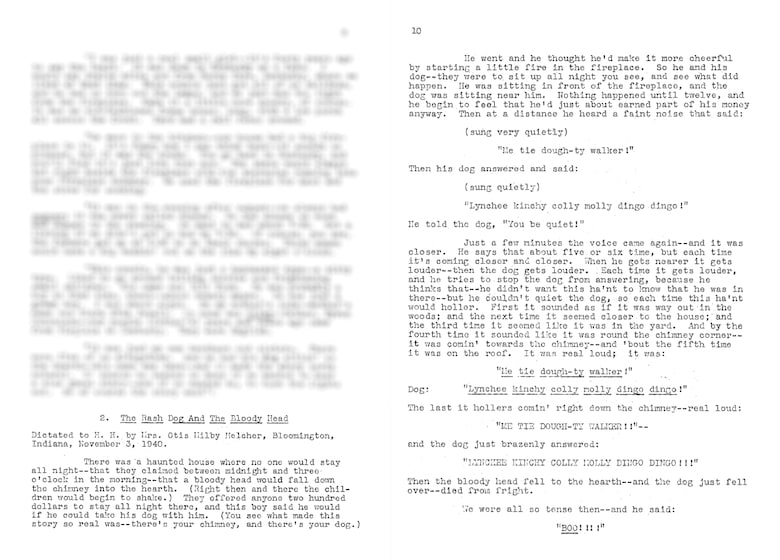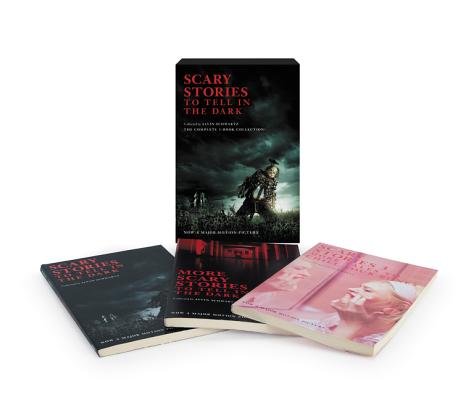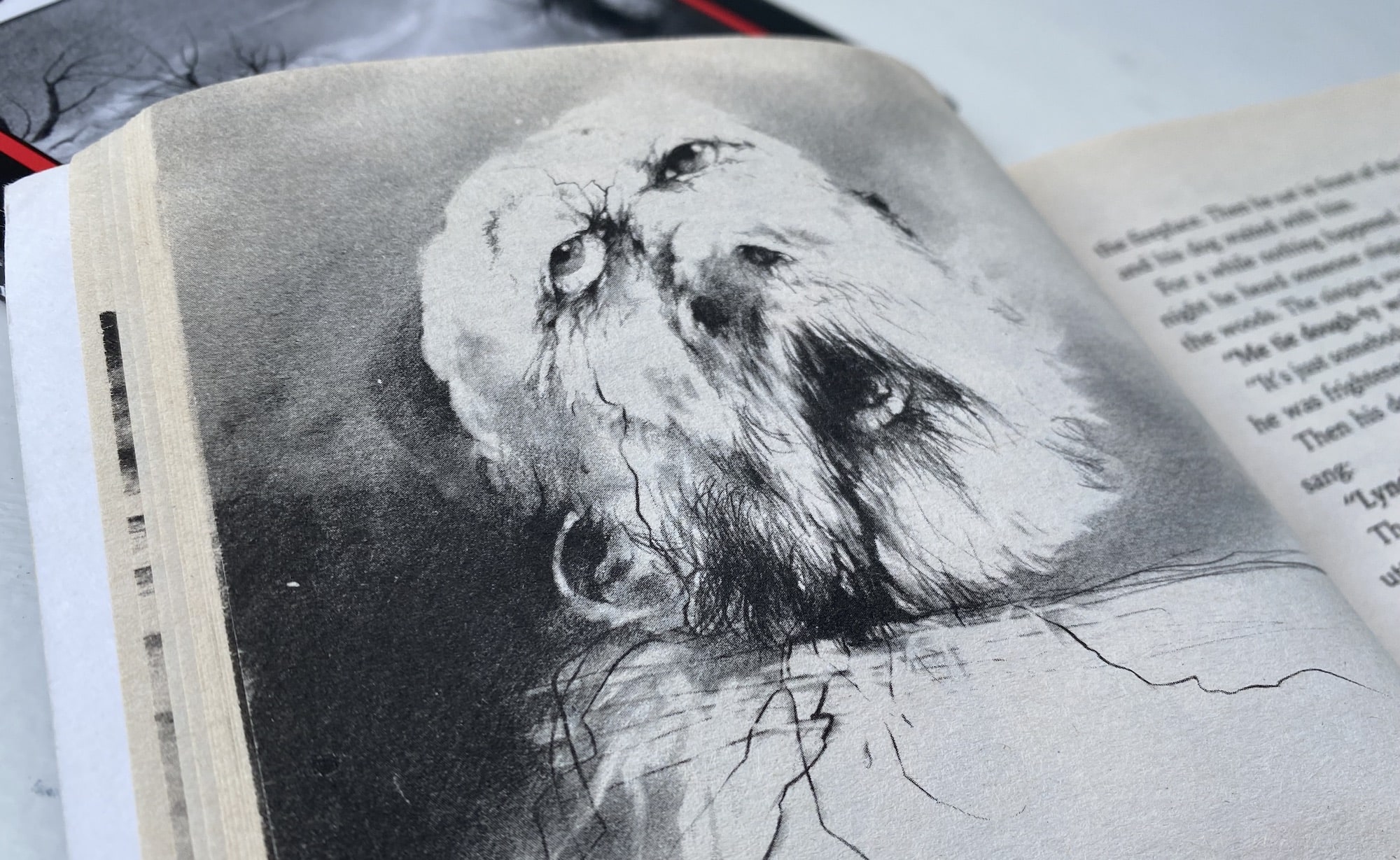I made a documentary about Scary Stories to Tell in the Dark. (Now available to watch.) The three books consisted of over 80 stories of folklore and urban legends. It was impossible to appropriately address each and every story in a single documentary. This website, in part, is a chance to look at individual stories that I researched, tales in which I learned about their origins and social contexts. It’s a chance to examine stories that I ultimately found to be fascinating in some way or another.
This is Me Tie Doughty Walker.
Many scary stories told through oral tradition are “jump tales”… in some ways a fun precursor to jump scares that are now common in horror movies. It has become a tradition, just as synonymous as the gathering around a fire.
It is the story that is told calmly, with a slow build. A reoccurring sound… it could be an uttering from somewhere outside, like “Where is my toe?” or “Wait ’til Martin comes” or it could be a creepy footstep that gets closer and closer. And then in the end, it’s either a silly joke and the impending danger was nothing at all. Or, it’s a big surprise and a scream.
The reoccurring statement or sound varied a lot through many retellings and variations, told in different lands where they would give it their own spin. The version that many people are familiar with, often because they heard it in the very first Scary Stories to Tell in the Dark book, is Me Tie Doughty Walker.
Me Tie Doughty Walker – Scary Stories to Tell in the Dark
Here is the full story of “Me Tie Doughty Walker” that was included in the first Scary Stories to Tell in the Dark book.
There was a haunted house where every night, a bloody head fell down the chimney- At least that’s what people said. So nobody would stay there overnight. Then a rich man offered two-hundred dollars to whoever would do it. And this boy said he would try, if he could have his dog with him. So it was all settled. The very next night, the boy went to the house with his dog. To make it more cheerful, he started a fire in the fireplace. Then he sat in front of the fire and waited, and his dog waited with him.
For a while, nothing happened. But a little after midnight, he heard someone singing softly and sadly out in the woods. The singing sounded something like this: “Me Tie Dough-ty Walker!” “It’s just somebody singing,” the boy told himself, but he was frightened. Then his dog answered the song. Softly and sadly it sang: “Lynchee Kinchy Colly Molly Dingo Dingo!”
The boy could not believe his ears. His dog had never uttered a word before. Then a few minutes later, he heard the singing again. Now it was closer and louder, but the words were the same: “Me Tie Dough-ty Walker!” This time, the boy tried to stop his dog from answering. He was afraid that whoever was singing would hear it and come after them. But his dog paid no attention and again it sang: “Lynchee Kinchy Colly Molly Dingo Dingo!” A half-hour later, the boy heard the singing again. Now it was in the backyard, and the song was the same. “Me Tie Dough-ty Walker!”
Again the boy tried to keep his dog quiet, but the dog sang louder than ever: “Lynchee Kinchy Colly Molly Dingo Dingo!” Soon, the boy heard the singing again. Now it was coming down the chimney: “ME TIE DOUGH-TY WALKER!” The dog sang right back: “LYNCHEE KINCHY COLLY MOLLY DINGO DINGO!” Suddenly, a bloody head fell out of the chimney. It missed the fire, and landed right next to the dog. The dog took one look, and fell over, dead from fright. The head turned and stared at the boy. It slowly opened its mouth and —
“AAAAAAAAAAAH!”
Origin of Me Tie Doughty Walker
The most direct origin to the version Alvin Schwartz used in Scary Stories to Tell in the Dark comes from Herbert Halpert in Hoosier Folklore Bulletin. In this version it was called “The Rash Dog and the Bloody Head,” dictated to Herbert Halpert by Mrs. Otis Melcher in Bloomington, Indiana in 1940.

Alvin Schwartz kept close to this particular version. He uses the same setup of a scare dare, the same statements of both what the head and the dog say: “Me Tie Doughty Walker” and “Lynchee Kinchy Colly Molly Dingo Dingo!”… besides the word you choose to end it with, be it “Boo!” or “Ahhh!” there isn’t huge differences.
But like most of these old folk tales, it’s virtually impossible to get at a specific origin. And arguably there isn’t a definitive version, since it spread through storytelling and began to vary quickly from one telling to the next.
It is folklorists like Herbert Halpert who collect and write them down and popular books like Alvin Schwartz’s Scary Stories to Tell in the Dark that become a snapshot of a story. They cement a version on paper, which is both important but also is limiting by not being able to fully capture the full history of the story and its many versions and cultural context. They can capture a lot, yes. But they never represent everything that is known and knowable about the story.
— FOUNDATIONS OF HORROR —
Further explore these subgenres & tropes. more>>
#Scary Stories to Tell in the Dark | #Scare Dare | #Folk horror | #That House is Scary | #Jump Scare

Most of the best texts involving folklore cite AN origin, maybe not only one, and highlight as much details as possible. But it’s never going to be the true and full story of the tale and where it comes from. And that’s OK. That’s folklore. And that is what makes folklore so interesting. It lives and breathes over time and throughout generations.
The Meaning Behind the Story
There are two major tropes of scary stories working heavily in this story. They are tropes that are so engrained in our storytelling, throughout thousands of other stories. I happen to believe Me Tie Doughty Walker is perhaps one of the best examples of each of them.
One is the This House is Scary trope, in which there is a creepy house down the block in your hometown. There is always that house. Fundamentally, children are scared of things they see each and every day that they can’t fully explain. An old house that they see as they walk home every day would be pretty high on that list. And no doubt, creating tales about that house and who (or what) may live there is bound to be a common spook story that develops naturally.

The other trope featured heavily in Me Tie Doughty Walker is the Scare Dare. That is, any scary story that involves someone being dared to do something, and the resulting story that comes from that dare. This is a good match with the “creepy house down the block” trope, though other times the story begins with someone being dared to go to a cemetery like in “The Girl Who Stood on a Grave” or really any local location that kids and teenagers might find spooky and has likely created some local legends. This trope also connects to Bloody Mary or other variations where the dare is saying something in the mirror.
Ultimately, children and teenagers become experimental in many ways, and they begin to dare each other to push their boundaries. It can be unhealthy when it becomes bullying, or is a dare that is quite dangerous. But the desire of children to dare each other and push the boundaries of the things they see around themselves is natural… and a natural part of our storytelling culture.
Last Updated on November 11, 2024.

